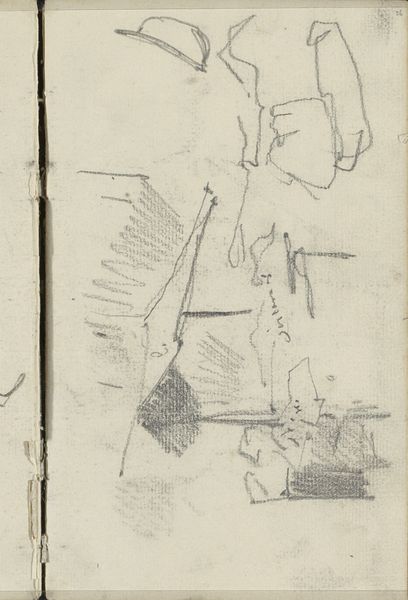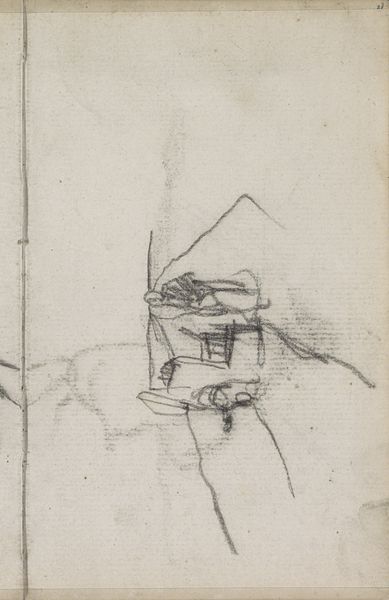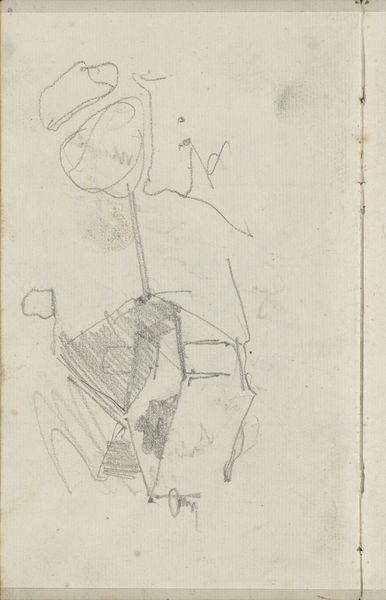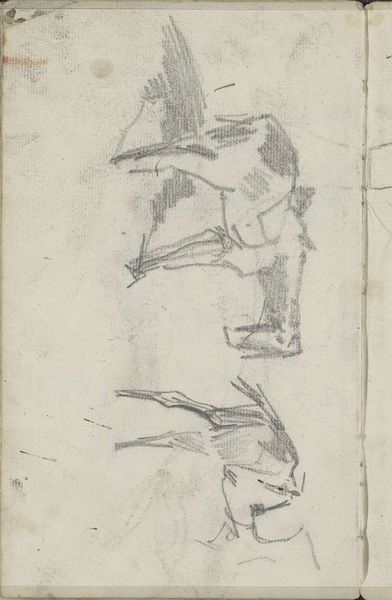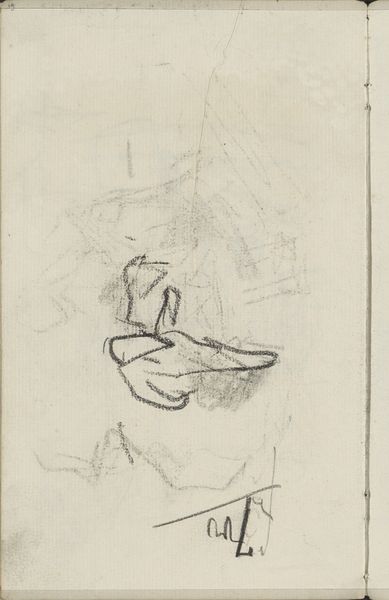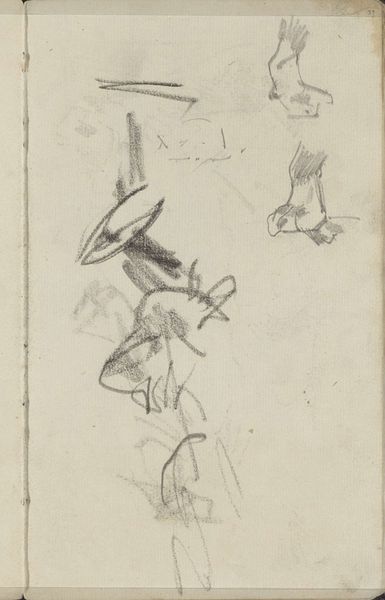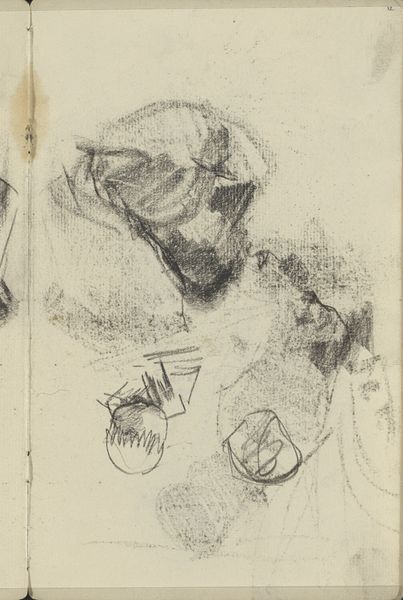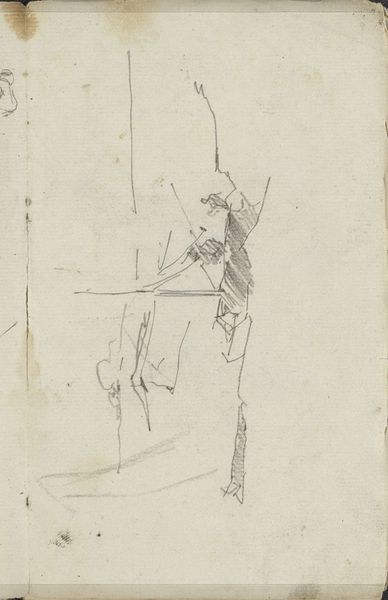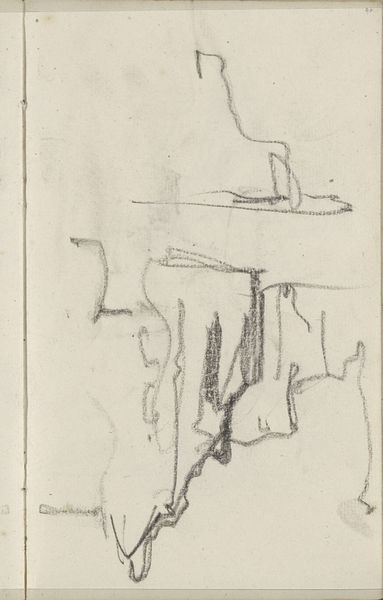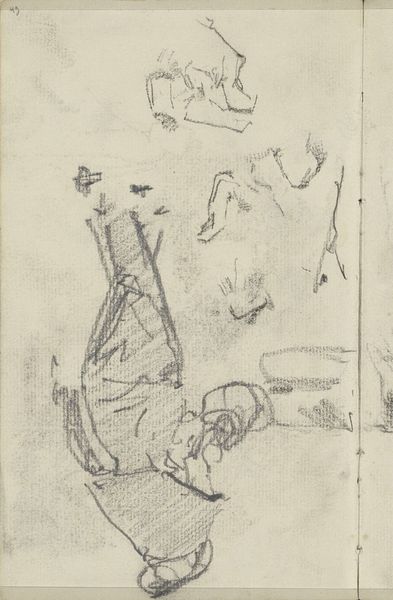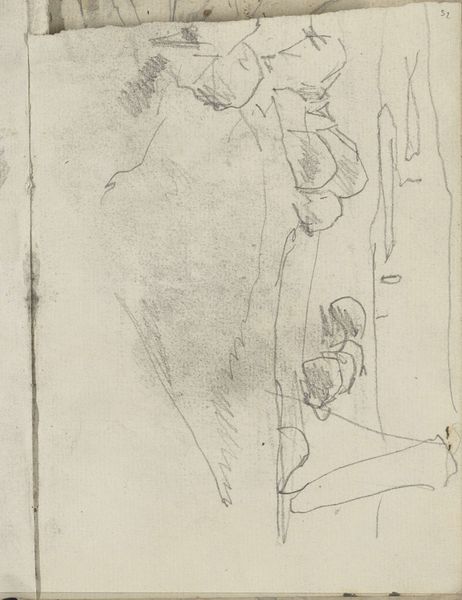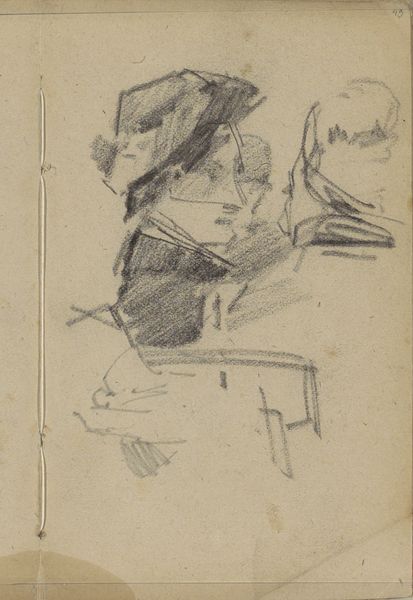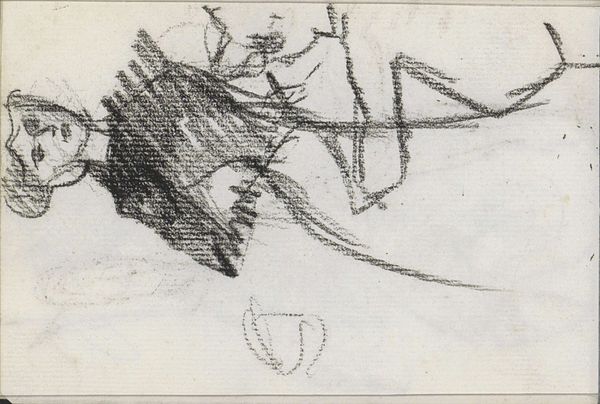
Figuren aan een tafel, mogelijk in een etablissement c. 1895 - 1898
0:00
0:00
georgehendrikbreitner
Rijksmuseum
Copyright: Rijks Museum: Open Domain
Curator: The work before us, housed here at the Rijksmuseum, is titled "Figuren aan een tafel, mogelijk in een etablissement" or "Figures at a table, possibly in an establishment" by George Hendrik Breitner, created circa 1895-1898 using pencil as the medium. Editor: It feels almost like a fleeting memory, or an unfinished thought; a scene witnessed in a half-dream, perhaps? Curator: Absolutely, Breitner was an Impressionist so he seeks to convey the momentary and sensorial. We see a fascination with the figure and candid, snapshot-like composition. What strikes me is how these quick lines contain so much depth of character; are the visual traces of stories yet untold. Editor: For me, it's really about the hand that made it. Look at the quality of the pencil strokes. It's direct, no hesitation. There’s such intimacy in seeing the raw material transformed through energy, not polished form. One can imagine Breitner at that establishment sketching while watching, drinking. It feels raw, and it places us within his social world of production. Curator: You’ve picked up on something key to consider with this work: the act of observation is essential to how we access the symbols here. Those swift lines build not only a likeness but an experience, inviting us into that space to contemplate what narratives we can extrapolate and if any hold universal meaning to our own time and selves. Editor: But do we risk romanticizing? We tend to ignore labor in artistic processes, and forget these 'quick' sketches were likely part of a whole process involving many hands – paper-makers, pencil producers. I feel drawn back to acknowledge them as well. I imagine them producing, distributing in that time. This sketch isn't only the mark of one genius but rather part of larger structures which all helped compose. Curator: A powerful way of perceiving it. The symbol of those anonymous labors can shift our appreciation beyond one man, opening broader avenues of thinking, connecting. Editor: Right; the focus on labor enhances how we appreciate artwork by attending to material relations of what otherwise might remain hidden at first sight or appreciation alone—to fully encounter.
Comments
No comments
Be the first to comment and join the conversation on the ultimate creative platform.
